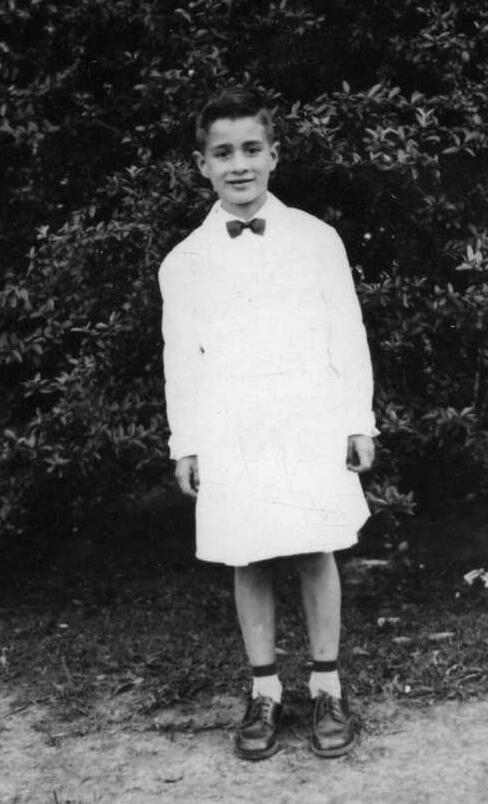
Figure 1.--This family snapshot is undated, but we believe it was taken in the late 1950s. The boy wears the lab-coat style of front buttoning smock that was so common in Argentina for boys. |

|
HBC has little chronological information on Argentine school smock styles. We are ot sure when they were first adopted, but believe iy was the 1910s. We hve rchived quite a number of 20th cntury Argentine images. We note a variety of smock styles. A reader reports that his mother pointed out that there were two different terms: labcoat smocks were front-buttoned (tabliers) and dusters (guardapolvos) were back-buttoned. We see both types worn at school. Smocks in Argentina initially buttoned in the back, especially for women.The boy here is wearing the tablier lab coat style, we think in the 1950s. By the 1970s when our Argentine source went to school, the two different terms were used indistinctly. The lab-coat style of front buttoning smock became standard for boys. Girls used both types. Boys except for the very youngest only wore front-buttoned smocks. Girls wear back buttoning styles with Peter Pan collars. Boys currently seem to wear front buttoning styles with lapels like jackets, often with ties. We see some specialized styles worn by yonger children.
Labcoat smocks were front-buttoned smocks known as tabliers. The boy here is wearing the tablier lab coat style, we think in the 1950s. The lab-coat style of front buttoning smock became standard for boys and was also worn by some girls. Boys except for the very youngest only wore front-buttoned smocks. Boys currently seem to wear front buttoning styles with lapels like jackets, often with ties. As time passed the labcoat smocks became more and more standard for boys. It was virtually a uniform at boys' schools.
Duster smocks were the standard back-buttining smocks commonly wormn in Europe. In Argentina they were known as dusters. Smocks in Argentina initially buttoned in the back, especially for women. This is the style we first see (1910s). By the 1970s when our Argentine source went to school, the two different terms were used indistinctly. Girls used both types. Girls wear back buttoning styles, often with Peter Pan collars. At girl's schools they were fairly standard.
We see some specialized styles worn by yonger children. We note one Catholic class of Kindergarten children. They all wearvback-buttoning smocks. The girls wear smocks with wide pleted collars. The boys wear smocks with sailor collars. The portait is undated. We would guess the portrait is dated to the 1930s, but are not at all sure. The nuns were apparentky very strict about how the children dressed. Every child is perectly turned out.
Navigate the Boys' Historical Clothing smock pages
[Return to the Main Argentine smock page]
[Return to the Main smock page]
[Return to the Main school smock page]
[Belgium]
[Bolivia]
[Canada]
[England]
[France]
[Germany]
[Greece]
[Hungary]
[Iran]
{Italy]
[Japan]
[Lebanomn]
[Netherlands]
[New Zealand]
[Poland]
[Portugal]
[Spain]
[Spain]
[Turkey]
[Uruguay]
Navigate the HBC School Section:
[About Us]
[Activities]
[Chronology]
[Clothing styles]
[Countries]
[Debate]
[Economics]
[Garment]
[Gender]
[Hair]
[History]
[Home trends]
[Literary characters]
[School types]
[Significance]
[Transport and travel
[Uniform regulations]
[Year level]
[Other topics]
[Images]
[Links]
[Registration]
[Tools]
[Return to the Historic Boys' School Home]
Navigate the Historic Boys' Clothing Web chronological pages:
[The 1890s]
[The 1900s]
[The 1910s]
[The 1920s]
[The 1930s]
[The 1940s]
[The 1950s]
[The 1960s]
Navigate the Historic Boys' Clothing Web style pages:
[Return to the Main school school smock page]
[Return to the Main smocks page]
[Return to the Main Argentine school uniform page]
[Dresses]
[Bodice dresses]
[Kilts]
[Sailor suits]
[Sailor hats]
[Ring bearer/page costumes]
[Pinafores]
[Shortalls]
